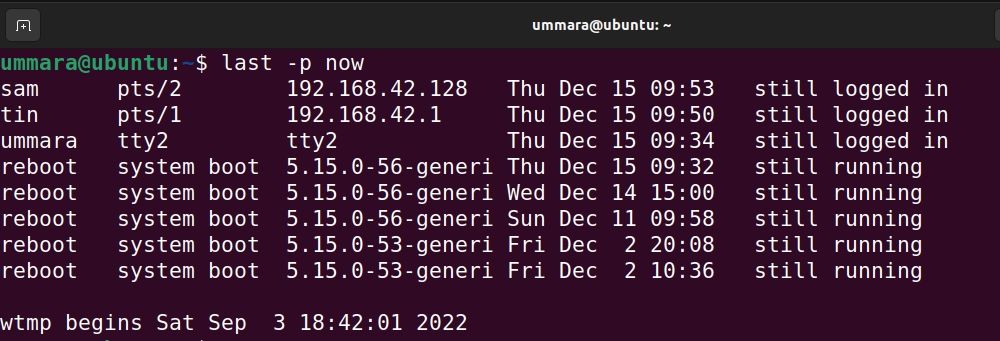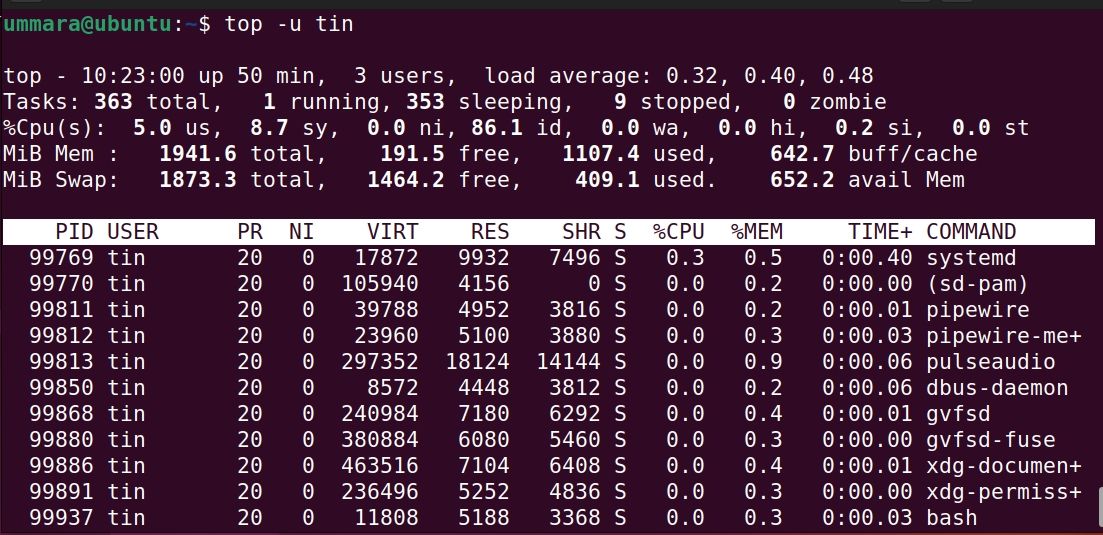Linux being a multi-user system allows multiple users to log in and run various programs at the same time. As a normal Linux user or system admin, you may sometimes need to check which users are currently logged into your system.
This information can be useful for various reasons such as for troubleshooting performance issues, monitoring user activity, or for simply checking who else is using the system.
There are several methods to list current logged-in users on Linux and see what they are doing.
1. The users Command
The users command in Linux lists all users who are currently logged in in alphabetic order.
Note that if a user has two login sessions, it will appear twice in the output.
The output below tells that there are three users logged into the system currently.
2. Using the who Command
The who command prints the list of users currently logged into the system along with other information such as the terminal they're using, login date and time, and IP address or hostname of the system if a user is on a remote machine.
To list current logged-in users on Linux, use the who command as follows:
who
You can also use the who command with -a and -H flags to display idle time and PID of the user's login shell:
who -a -H
3. Using the w Command
The w command in Linux shows logged-in users and their activities. It prints the list of users and their current processes in the command line.
The header in the output summarizes the status of the system which includes the current time, system uptime, number of logged-in users, and load average. Then for each logged-in user, it displays the user name, tty name, time of login, idle time, time used by all the processes (JCPU), time used by the current process (PCPU), and the current process the user is running.
4. Using the last Command
The last command lists current as well as past logged-in and logged-out users. The information it provides includes the name of users and terminals, the IP address of the system they are logged in from, and the date and time of login.
To find the list of users logged in currently, use the last command with the -p now option as follows:
last -p now
5. The finger Command
The finger command shows information about all the logged-in users on Linux including their username, tty, login date and time, and IP address. You can easily install finger on your Linux distribution using the default package managers.
On Debian-based distributions:
sudo apt-get install finger
On RHEL-based distributions:
sudo yum install finger
To display information on current logged-in users, run the finger command without any command-line options:
finger
If you run the command with the username, it displays more information about the particular user:
6. Using the top Command
The top command displays a summary of system information such as uptime, number of logged-in users, load average, number of tasks running, etc. It also shows the processes that are currently running on the system and their resource usage.
Once you know who is currently logged in to your system, you can use the top command to find the current processes for the user:
top -u username
Keep an Eye on User Activity on Linux
With these commands, you should now be able to easily list logged-in users on a Linux system. Whether you are a system administrator monitoring user activity and performance or simply a curious Linux enthusiast, these commands will help you find who else is logged in and what they're doing.
Among these commands, you can also use the who and w commands to track your Linux system's shutdown and restart history.









